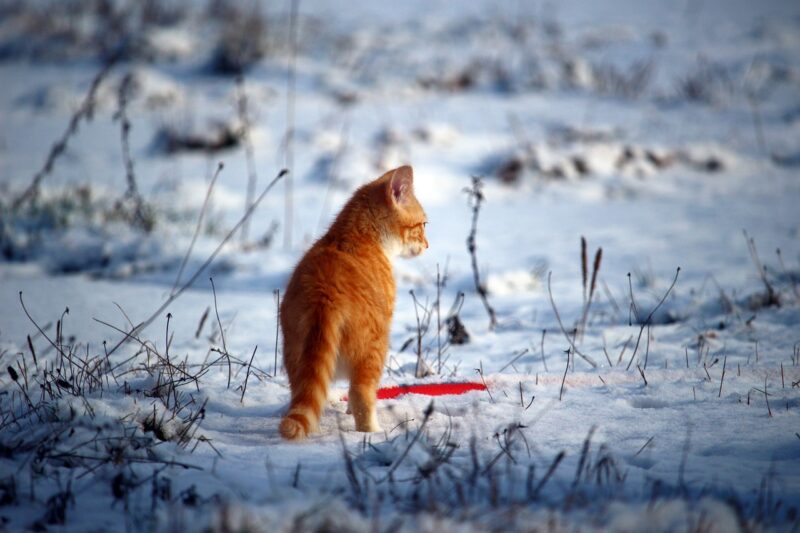When the weather becomes colder, people automatically think about how they might protect outdoor cats. If you’re worried about stray felines in the winter, keep in mind that their natural habitat is the outdoors.
Felines have always survived outside and flourished in a variety of habitats, temperature differences, and seasons. They’ve evolved effectively to their surroundings and understand where to obtain food and protection from the weather.
You can help them in a variety of ways. Just by following some steps, you can care for stray felines, keeping in mind their health and security, while they are outside during the colder months.
How to keep outdoor cats to stay warm during cold weather?
If you find feral or stray cats outside your house, or if you feel the need to make a change in the community of ferals or stray animals during the cold winter months, follow these excellent ideas:
- Provide dry and warm shelters
- Provide cats with lots of fresh food
- Make the outdoor cats get fresh warm water every day
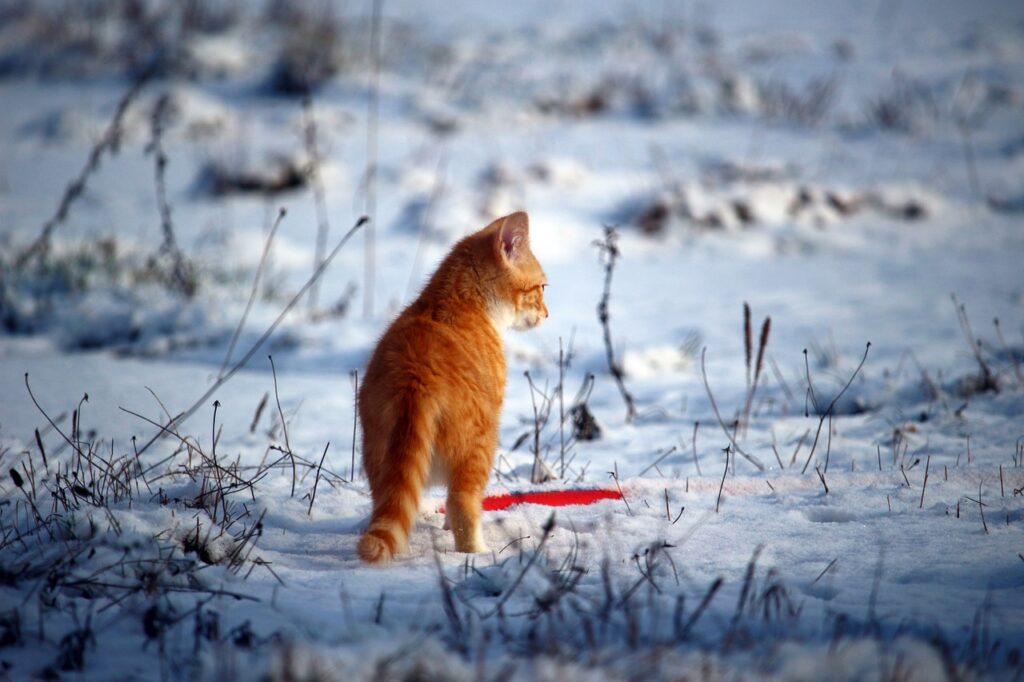
1. Provide dry and warm shelters
During harsh, chilly winter evenings, a feline needs shelter— spacious for a feline (or multiple), but ideally not for a canine, raccoon, squirrel, rabbit, or other outdoor animals. The safest approach to protect the outside feline warm during the cold is to provide it with a comfortable sleeping area. You can keep switching places and look for the warmest spot.
The first step you should take is to give outdoor kitties dry and comfortable shelter. Felines can use warm, covered shelters to get away from the rainfall, snow, and harsh temperatures. These shelters must be installed in an enclosed area, such as in a garage or in a driveway, rather than in a location where they could be drenched by existing water.
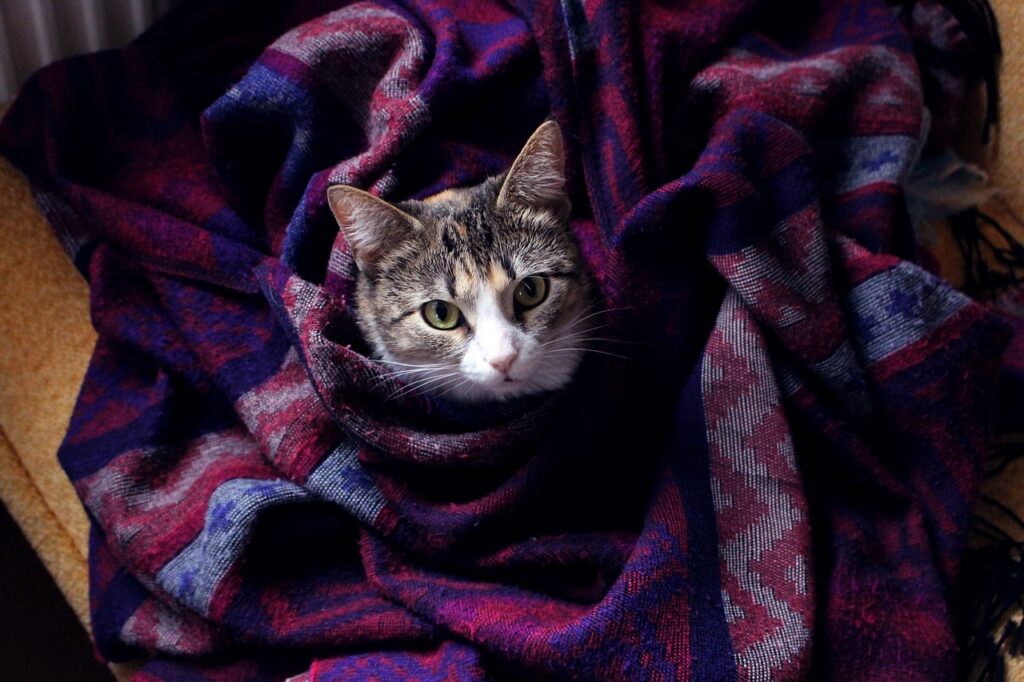
The best advice is to purchase a warm, water-resistant house designed just for felines. Search for feline shelters that include heated bedding that stays warm to the feline’s normal temperature. Whenever it’s freezing cold outdoors, this keeps the felines extremely warm. In the situation that a quick evacuation is required, these houses must have convenient exits. To prevent larger animals from moving in and taking control, the openings should only be wide enough to permit one feline at the moment.
Keep the enclosures far from human interaction so that cats won’t get scared. If possible, place the enclosures on an elevated spot a few centimeters above the grass to keep them out of the water, snow, and pests.
Opt for water-resistant bedding such as straw if you’re making your homemade shelter. (Hay, on the other hand, may absorb moisture and become moldy.) However, if you would like to be certain that everything is perfect, buy a heated outdoor shelter.
Read also : How should I bathe my cats, how often?
2. Provide cats with lots of fresh food
Felines that live outdoors must be fed daily. It has two significant reasons. The primary explanation is that felines who eat well are excellent fighters. It may appear contradictory, as a well feline hunt efficiently. When a feline gets out to prey, it would be only effective around 20–30% of the time. Felines require nutrition on a regular basis in order to be able to prey.
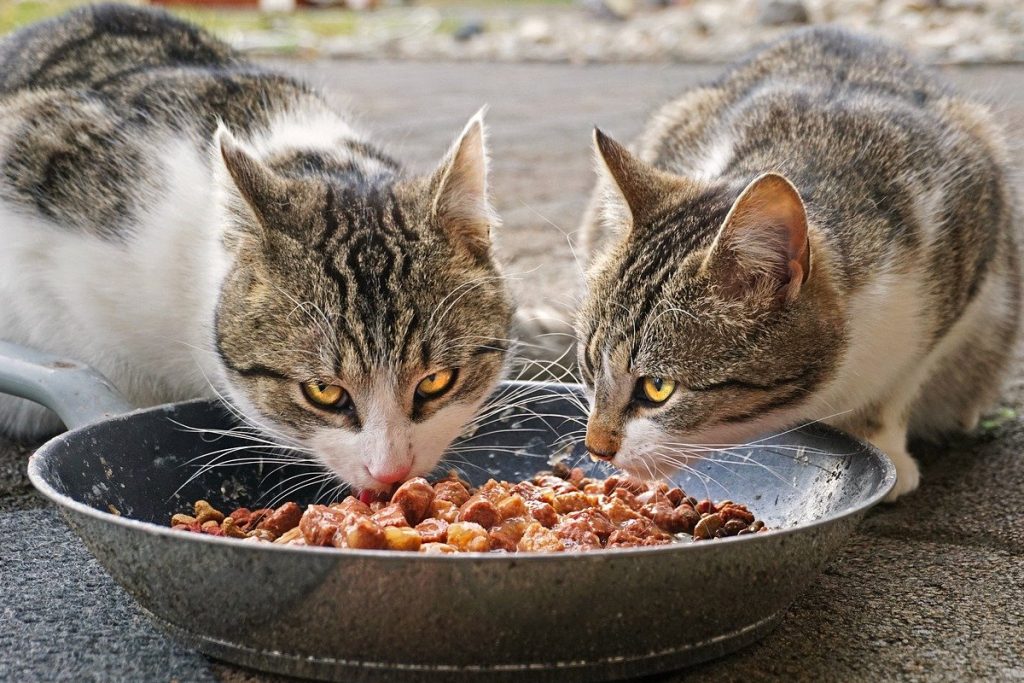
However, not all felines have a high impulse to kill, much alone consume the prey they catch. Felines, like people, have a variety of personalities. I’ve witnessed the many characteristics of my domestic felines over the years—some were terrific mousers, others were excellent bird predators, and others didn’t really want to do anything more than sit and stare outside the windows.
There seem to be a few more things to consider when it comes to regular feeding. Be careful that mice (and other animals) can carry infections, organisms, larvae, and other pests harmful to felines and people. This factor is a significant cause why I offer meals to the outdoor felines on a regular basis. I wouldn’t want those felines to become ill as a result of eating an infected mouse!
Another explanation for why a feline requires everyday nourishment (and the additional calories provided by the meal) is that it demands more strength to keep a feline comfortable and manage its body heat throughout the colder months.
Please remember that dry pet food is better to serve to your furry companions since it will not dry completely, or freeze, and felines will usually digest it. But, offering wet food has the advantage of requiring less effort from their gastrointestinal system, and it helps them preserve energy.
3. Make the outdoor cats get fresh warm water every day
Freshwater should be placed outside at least twice each day. But, you must be careful of how freezing it will become overnight, as water will freeze! So below are some pointers to prevent making the same mistakes with worthless ice bowls:
1. To avoid frost, replace dishes with boiling or hot water.
2. Keep the liquid in a location where it will not freeze. Place the dish someplace where it would be partially hidden from the cold and, therefore will absorb some sunshine. It could also be placed near heating systems such as vents and pipelines.
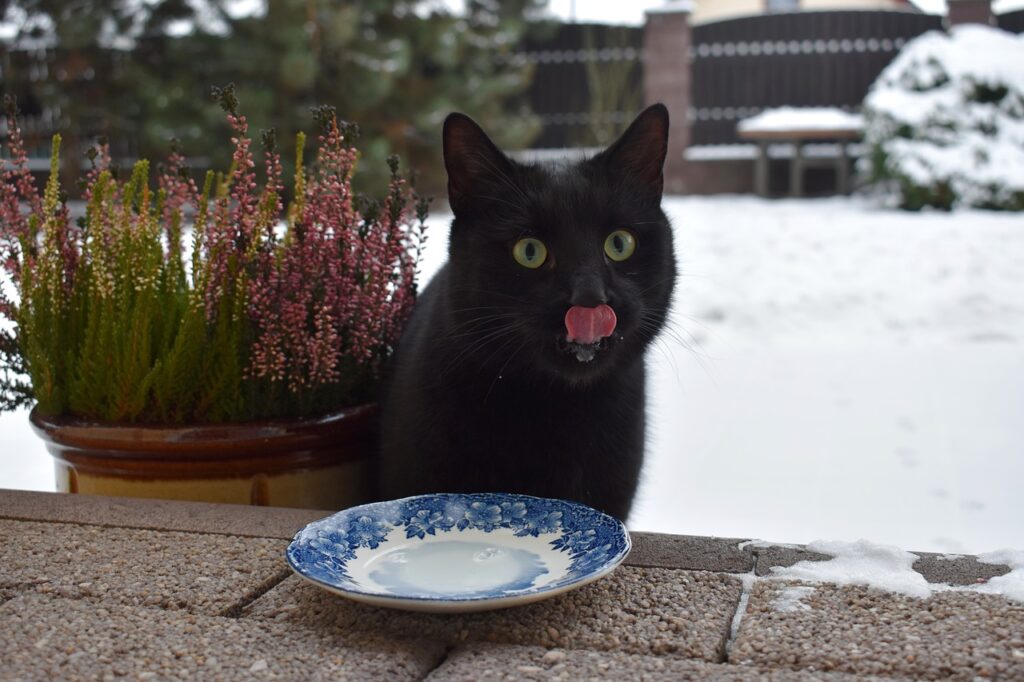
3. Think about purchasing a heated dish. There seem to be a variety of heated dishes available, some of them may be operated by electricity and others by solar energy.
4. If you are unable to purchase a heated dish due to monetary constraints, you must provide fresh, warm water in the exact spot and at a fixed time. The felines will figure out when you’re going to place the water dish and will show up at those hours. Routines are important to felines.
5. If you’re going to use a non-heated dish, choose one that’s solid, dark-colored, and wide but with a narrow opening.
6. Another alternative is to use silicone travel dishes. If somehow the water inside them eventually freeze, the top ice layer could be thrown away and refilled with fresh warm water.
How much should I feed a cat in winters?
As a rule of thumb, an adult feline should consume around 200 calories per day. It equals about 5.5 ounces of moist food per day, plus an ounce of canned food. Alternatively, if you simply offer dry food, it’s roughly 4–6 ounces each day.
However, this amount should be adjusted based on the number of felines you’re serving how much food is remaining after they’ve eaten.
To survive the severe cold, outdoor felines would want enough fresh food and clean water.
Can cat survive winter outside? Find the answer in this arcticle!
Final Thought
If you are an emotional person and have a soft corner for the felines who wander in this extremely harsh climate without any warmth, you have to make sure they get a secure and comfortable place to sleep if they want to.
It doesn’t imply you must purchase them a fully insulated feline home for the outdoors, but it really does suggest that you must take some steps to keep them safe from the weather.
An insulated outdoor house supplied with bedding and lifted above the floor, as well as a slightly opened garage entrance and a comfortable mattress in the shelter or near your car’s engine, will do the trick.
